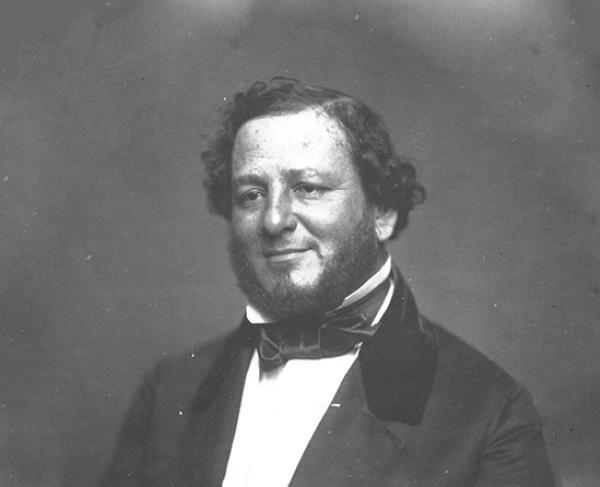160 Years Ago
March 16, 1862 – April 5, 1862
By Phil Kohn
Phil Kohn can be reached at USCW160@yahoo.com.
On March 16, 1862, Maj. Gen. McClellan starts moving elements of his command in preparation of his Peninsula Campaign. The plan: Move troops by boat to the York and James Rivers and attack Richmond by next moving northward up the Virginia Peninsula. McClellan will be faced by roughly 10,000 Confederate troops under Maj. Gen. John B. Magruder.
Jefferson Davis on March 18 names Judah P. Benjamin as secretary of state of the Confederacy. The former U.S. senator from Louisiana had been serving as the secretary of war, in which capacity Benjamin was often criticized, primarily due to his lack of military experience. Confederate guerrilla William Quantrill conducts a raid on the Federal garrison at Liberty, Missouri. There, he learns of Maj. Gen. Halleck’s proclamation of March 13 that he and other guerrillas are to be shot rather than captured as prisoners of war. From this time on, Quantrill’s raids become more vicious. Capt. William McCleave, of the 1st California Cavalry, leading a scouting party ahead of his main detachment that is on its way to “surprise” the Confederates at Tucson, arrives at the Pima Indian villages. There, McCleave and the nine troopers with him are themselves surprised and captured without a shot being fired by Capt. Sherod Hunter and his Confederate Arizona Rangers, who are already there.
On March 19, Maj. Gen. McClellan orders Maj. Gen. Nathaniel Banks, at Winchester, Virginia, to move his force east of the Blue Ridge Mountains. Banks is to coordinate with the proposed advance by troops under Brig. Gen. Irvin McDowell through Fredericksburg, Virginia, in support of McClellan’s offensive up the Virginia Peninsula.
As Federal troops begin moving out of Winchester, Stonewall Jackson’s Confederates begin advancing on March 20, occupying Strasburg, Virginia, some 19 miles to the southwest.
In the Tar Heel State, Union troops under Maj. Gen. Ambrose Burnside continue to move inland, taking Washington, North Carolina, on March 21.
Burnside’s troops take Morehead City, North Carolina, on March 22. In the New Mexico Territory, Brig. Gen. Henry Sibley’s Confederates learn that a Federal force is making its way towards Santa Fe from Fort Union, northwest of the Territorial capital, some 95 miles distant along the Santa Fe Trail. At Fort Yuma, California, Col. James Carleton dispatches 272 men and two howitzers to rescue Capt. William McCleave and his men, captured by Arizona Rangers at the Pima Indian villages.
On March 23, 1862, Stonewall Jackson attacks Union forces at Kernstown, in the Shenandoah Valley of Virginia. While Jackson is forced to withdraw, the attack worries President Lincoln that Washington may be threatened. He orders Maj. Gen. Banks to remain in the Shenandoah Valley and Brig. Gen. McDowell to remain near Washington to protect the capital instead of moving towards Richmond in support of McClellan’s Army of the Potomac.
Brig. Gen. Burnside’s Union troops take over Beaufort, North Carolina, on March 24, and begin a siege of Fort Macon there when a demand for surrender is refused. In Cincinnati, Ohio, abolitionist Wendell Phillips is pelted with eggs and rocks while giving a speech condemning slavery; the meeting ends in a wild brawl between supporters and anti-abolitionists. In a letter to newspaper editor Horace Greeley, Abraham Lincoln comments on his proposal of a gradual, compensated emancipation: “We should urge it persuasively, and not menacingly, upon the South.”
Fighting occurs on March 26 at Apache Canyon, outside of Santa Fe, New Mexico Territory, as 400 troops of the 2nd Texas Cavalry unexpectedly run into a like number of Union troops from Fort Union — reinforced by an additional 950 soldiers of the 1st Colorado Volunteer Infantry. The Colorado force, led by Col. John Slough, has marched some 400 miles from Denver to Fort Union through deep snow and high winds in 13 days. After some severe fighting in the narrow canyon, the outnumbered Confederates withdraw to Santa Fe, while the Union force falls back to an area at the eastern end of Glorieta Pass whence they came.
On March 28, stung by being forced to withdraw after the skirmish at Apache Canyon two days earlier, a much larger Confederate force led by Col. William Scurry enters Glorieta Pass to pursue the Union troops. The Federal soldiers, again led by Col. Slough, are once again heading toward Santa Fe, and the two sides collide in the middle of the tight confines of Glorieta Pass. After some fierce fighting, the Confederates push the Federals back through the Pass and take the field. However, some 400 Colorado troops under Maj. John Chivington circle the battlefield, rappel down 200-foot cliffs, and burn the Confederate supply wagons, forcing the battlefield victors to retire from the field and return to Santa Fe, now lacking ammunition and most of their supplies. (This battle — marking the farthest penetration of a large Confederate force in the Trans-Mississippi — is often referred to as “The Gettysburg of the West.”) In Richmond, President Davis, at the urging of Gen. Robert E. Lee, now acting as the president’s military advisor, recommends a conscription bill to the Confederate Congress.
Gen. Albert Sidney Johnston pulls Confederate forces together at Corinth, Mississippi, on March 29. His second in command is Gen. Pierre G.T. Beauregard.
On March 30, Brig. Gen. Henry Sibley’s Confederates regroup in Santa Fe, New Mexico Territory, after the debacle in Glorieta Pass two days earlier and assess their sorry plight. Meanwhile, fighting breaks out at Stanwix Station, Arizona Territory, about 80 miles east of the California border. There, the detachment of 16 Arizona Rangers led by 2nd Lt. John Swilling that is heading west along the Butterfield Overland Mail route destroying Union supply caches, runs into and surprises the vanguard of the 272-man Federal detachment that has been sent eastward to rescue the captured Capt. McCleave and his men. In the wild gunfight that ensues (the farthest-west action of the Civil War), the only casualty is a Union soldier, who is wounded. Vastly outnumbered, Swilling and his men break off the fight and skedaddle back eastward towards Tucson. They are pursued by a small detachment of Union cavalry, but to no avail.
At Hilton Head, South Carolina, Maj. Gen. David Hunter on March 31 assumes command of the Federal Department of the South. Much farther west, Capt. Sherod Hunter and his Arizona Rangers depart the Pima Indian villages, heading back to Tucson. In tow are several prisoners: U.S. Army Capt. William McCleave, a Union cavalry sergeant and eight troopers, and the Federal agent, Ammi White.
While Brig. Gen. Sibley’s Confederate troops regroup in Santa Fe, Col. Edward Canby on April 1, leads 1,200 Federal soldiers northward from Fort Craig — which Sibley had bypassed on his way up the Rio Grande Valley. Canby’s force will rendezvous with another 1,200 Federal soldiers coming southward from Fort Union. In Virginia, the transfer of the Army of the Potomac, led by Maj. Gen. George McClellan, from around Alexandria, Virginia, to Fort Monroe, at the tip of the Virginia Peninsula, continues.
On April 2, Gen. Albert Sidney Johnston moves his Confederate forces from Corinth, Mississippi, northward toward the large Federal presence, commanded by Brig. Gen. Ulysses Grant, at Pittsburg Landing, Tennessee.
The Confederate garrison at Appalachicola, on Florida’s panhandle, surrenders to units of the U.S. Navy on April 3.
On the Virginia Peninsula, on April 4, U.S. Maj. Gen. George B. McClellan’s Army of the Potomac — some 112,000 strong — begins advancing northward toward Yorktown. It is opposed by fewer than 15,000 Confederates under Maj. Gen. John Bankhead Magruder. In the Confederate Arizona Territory, Capt. Hunter and his Arizona Rangers arrive back at Tucson from the Pima Indian villages with their prisoner contingent of 11 captured Federal troopers of the 1st California Cavalry plus Union agent Ammi White.
At Yorktown, Virginia, Maj. Gen. McClellan on April 5 begins organizing siege lines instead of attacking the vastly outnumbered Confederates there. In the meantime, Confederate Gen. Joseph Johnston is rapidly sending reinforcements to the Virginia Peninsula.








